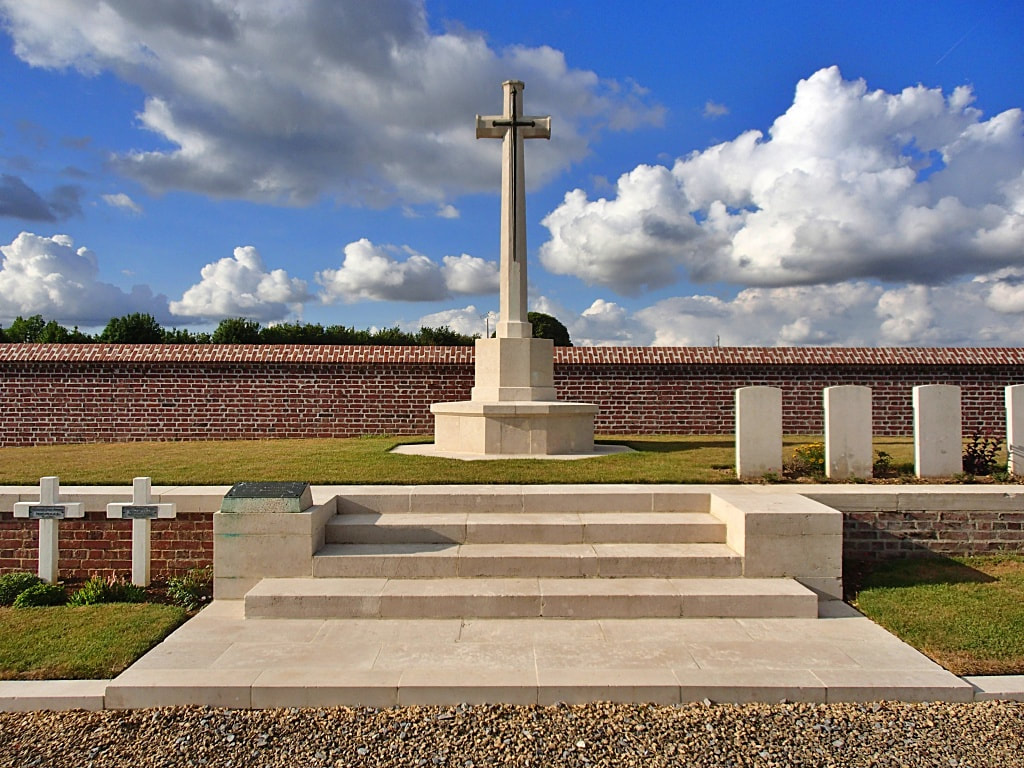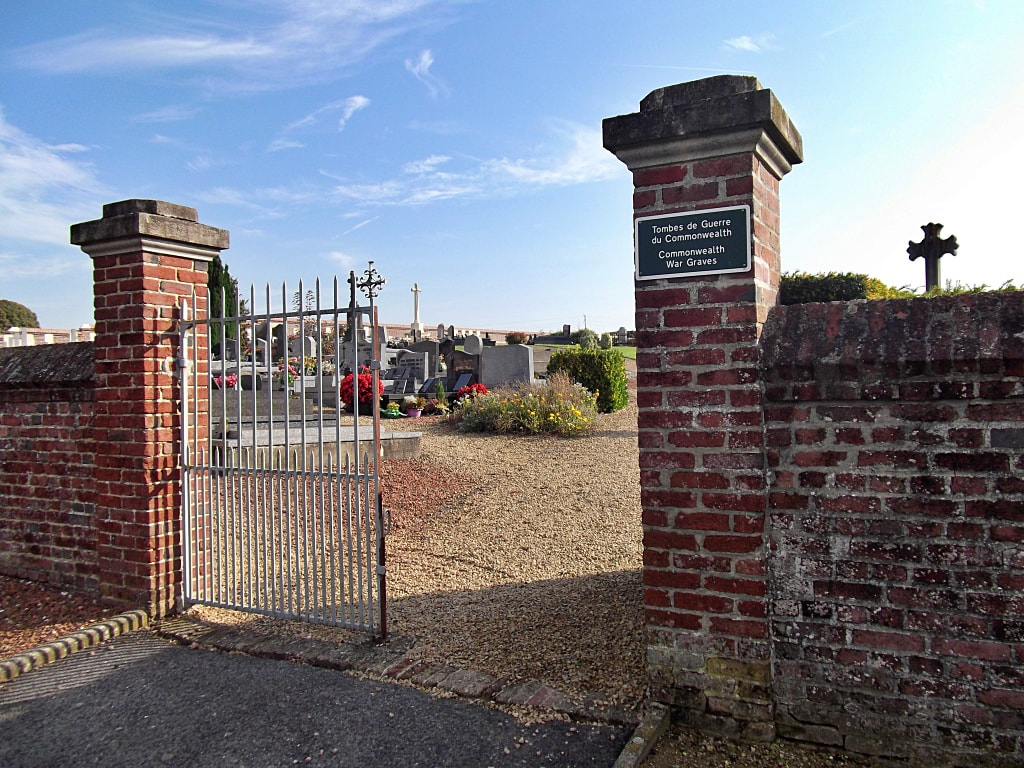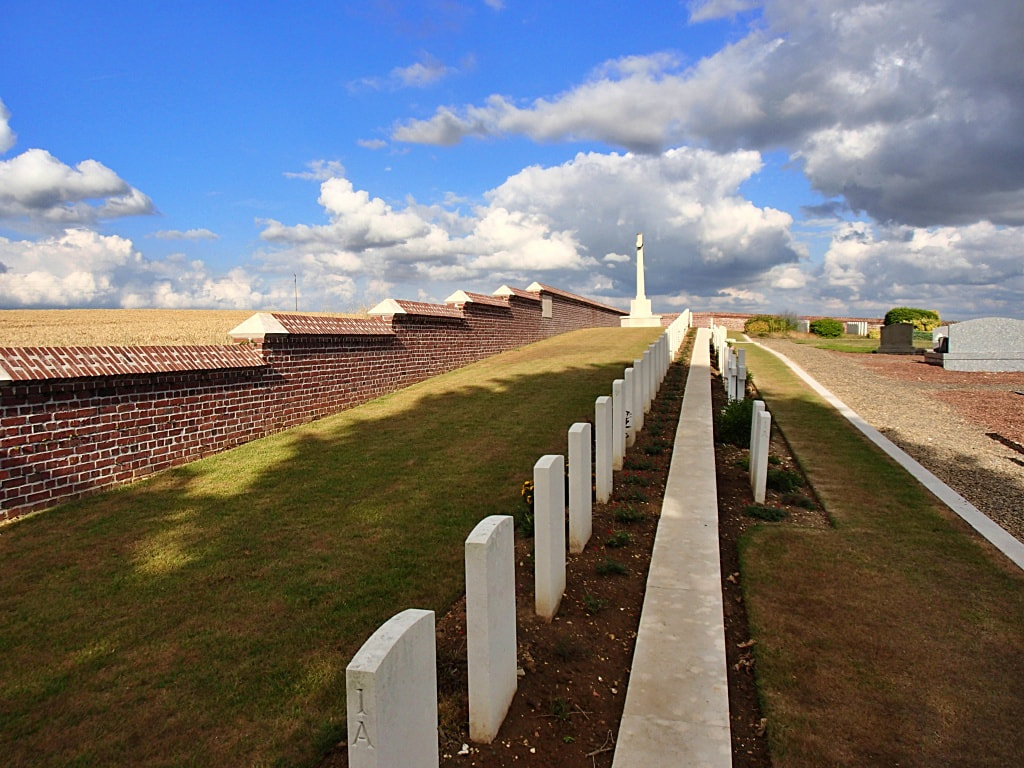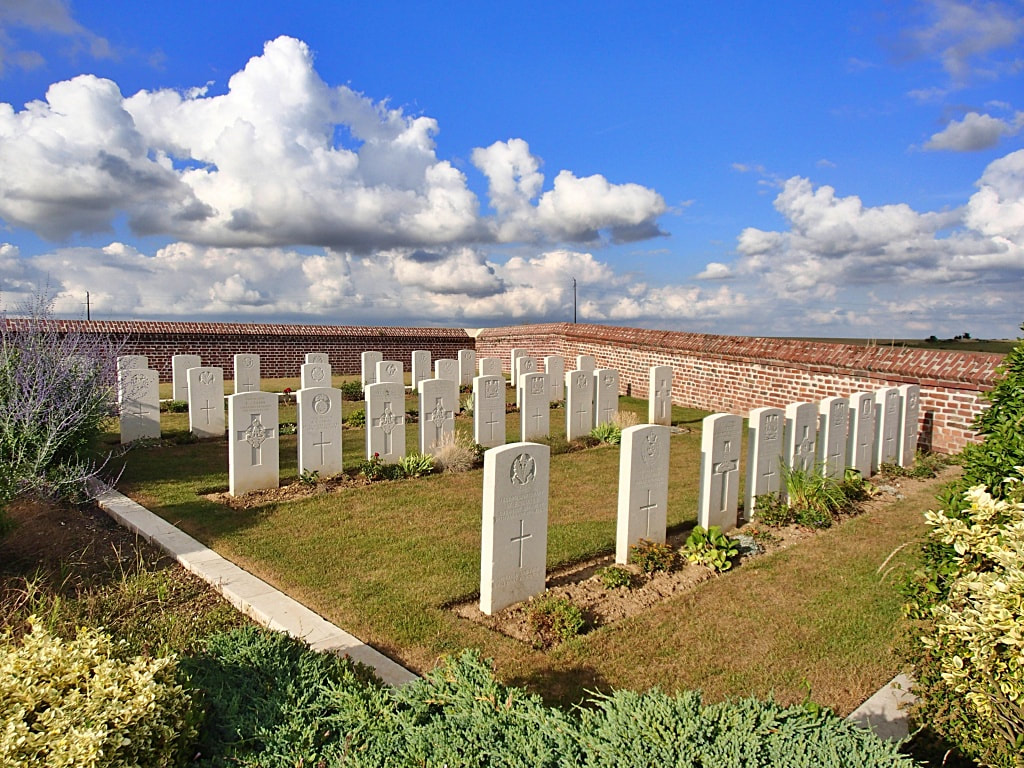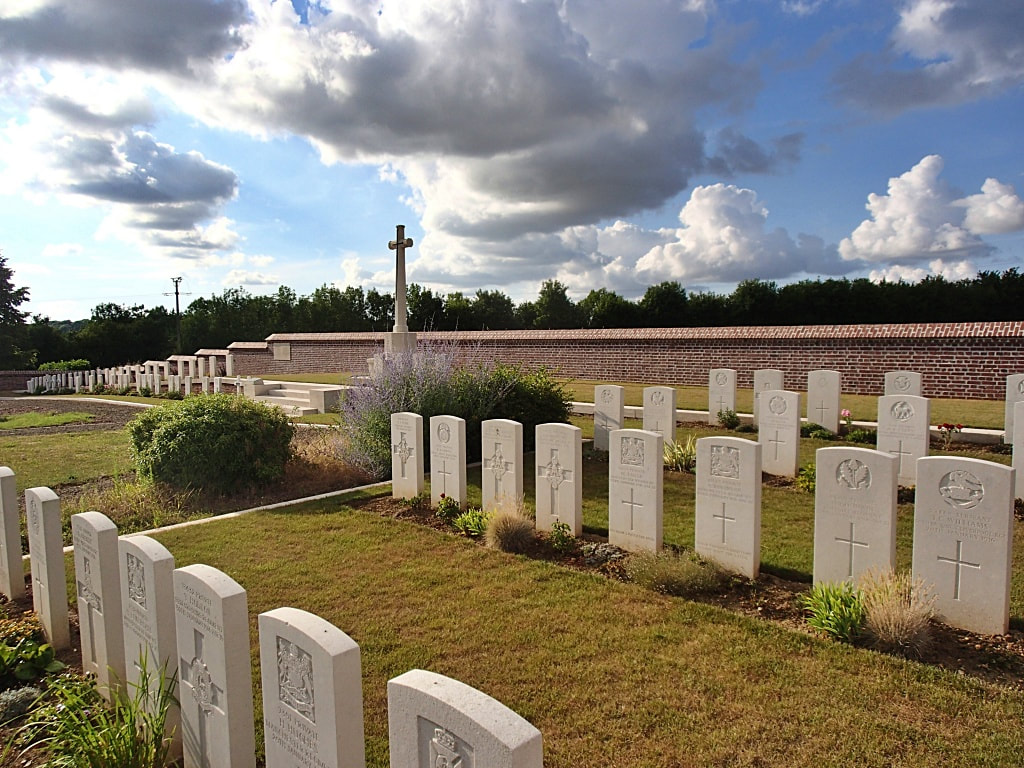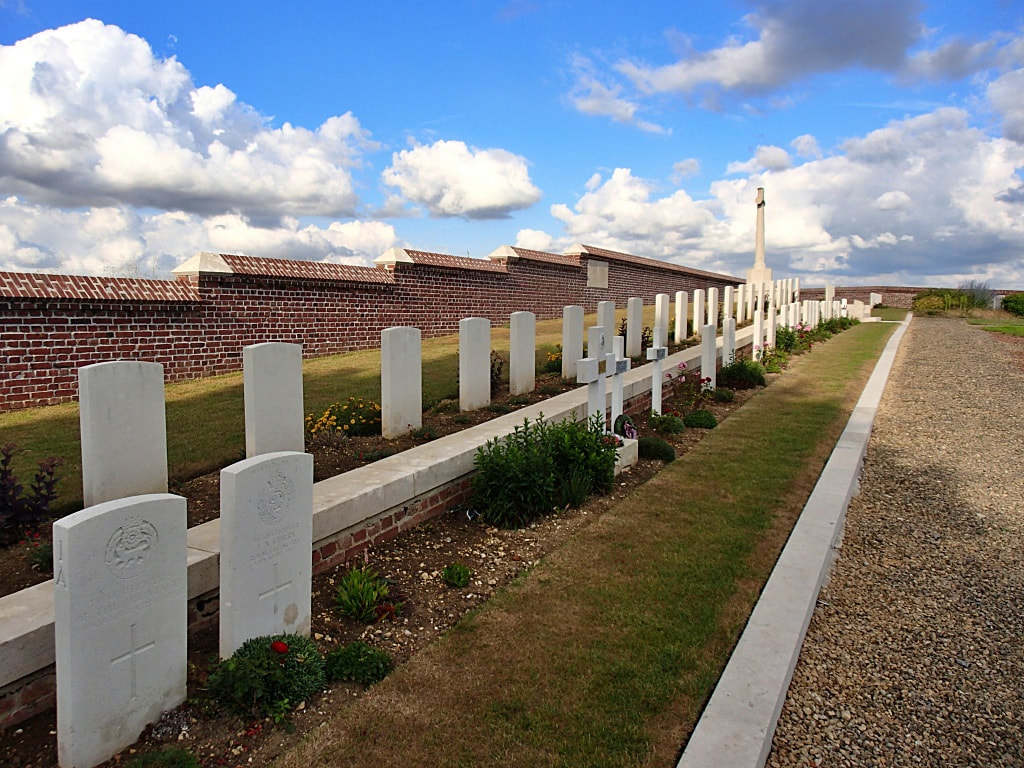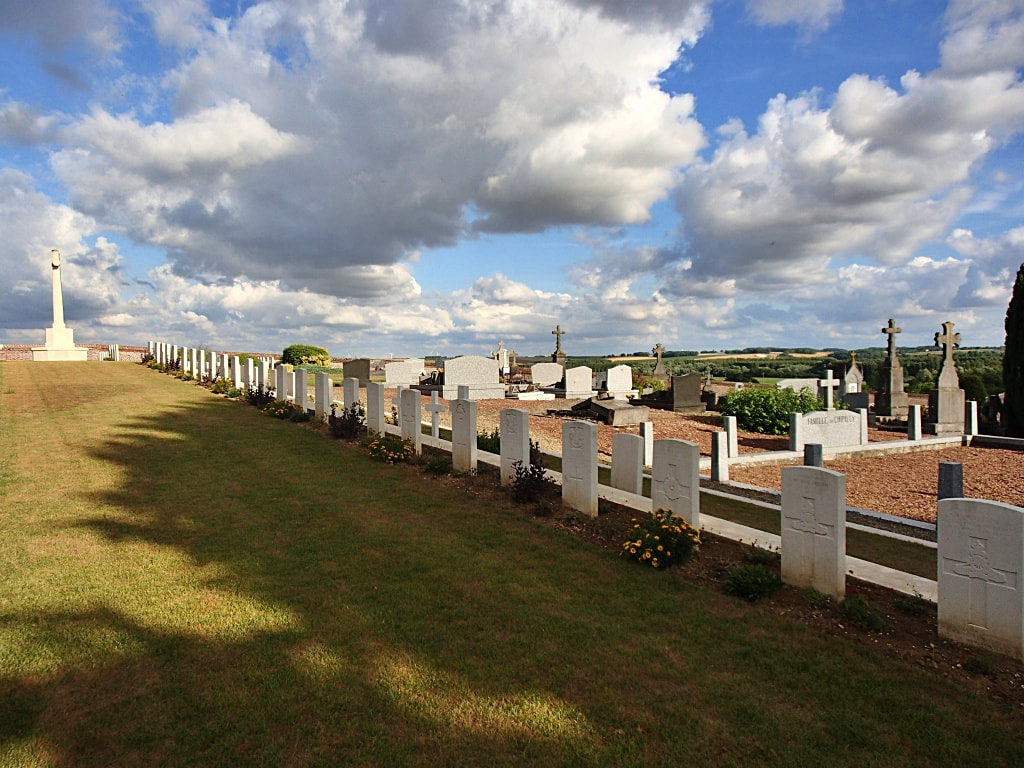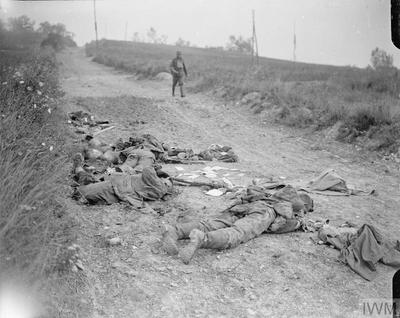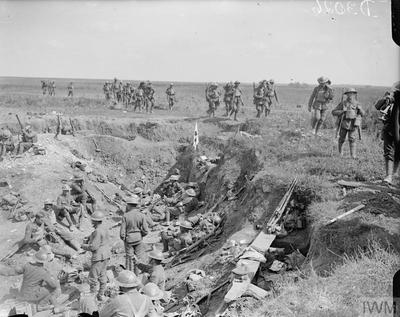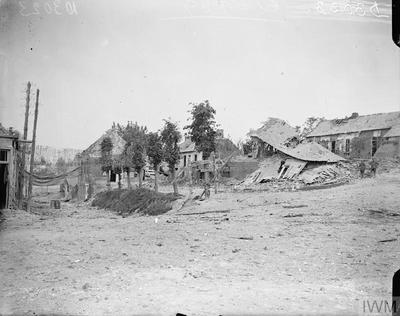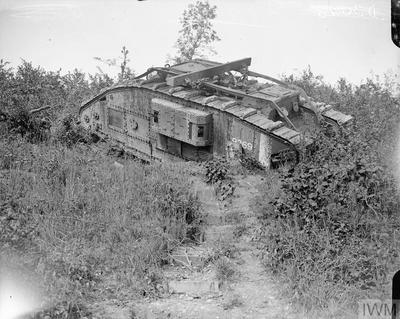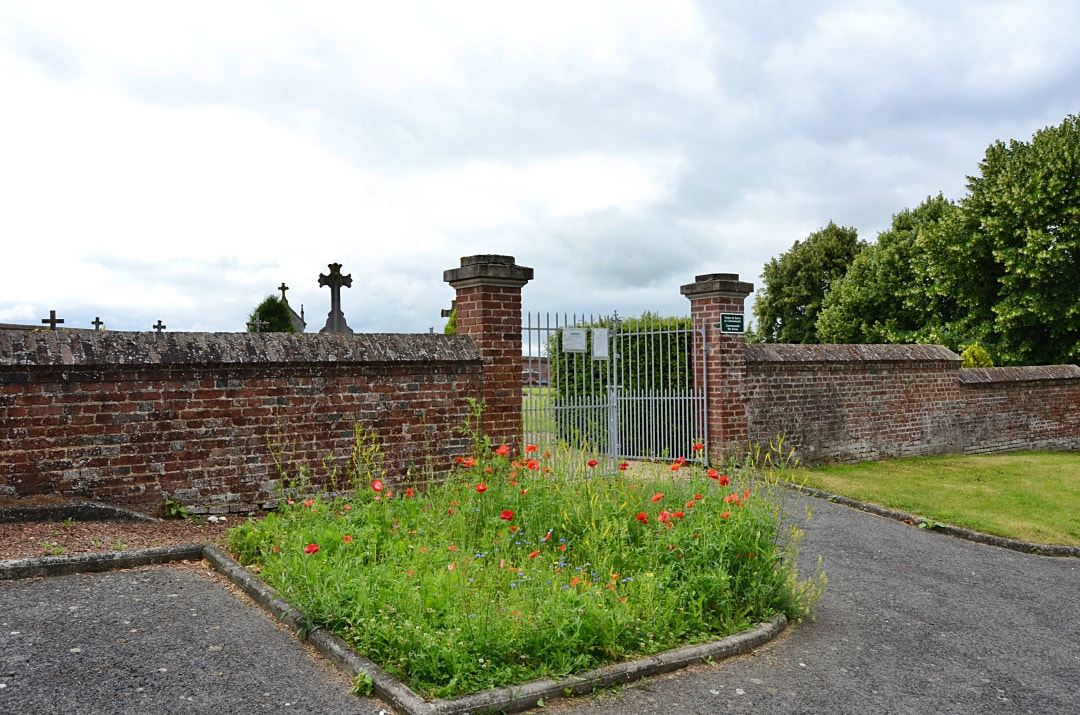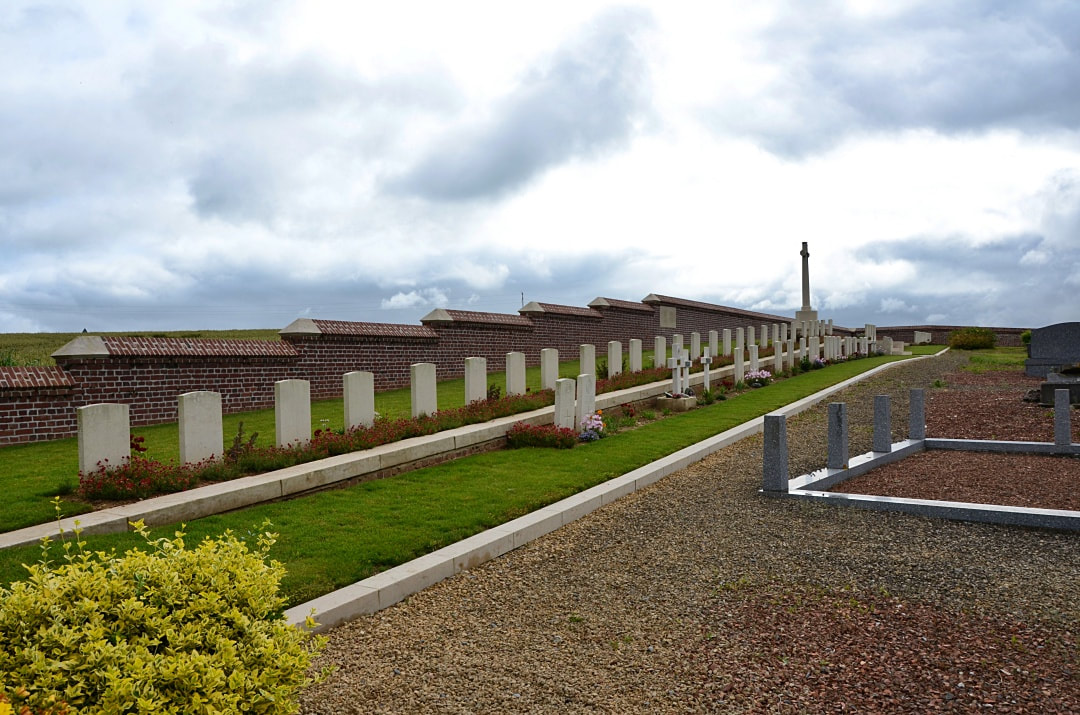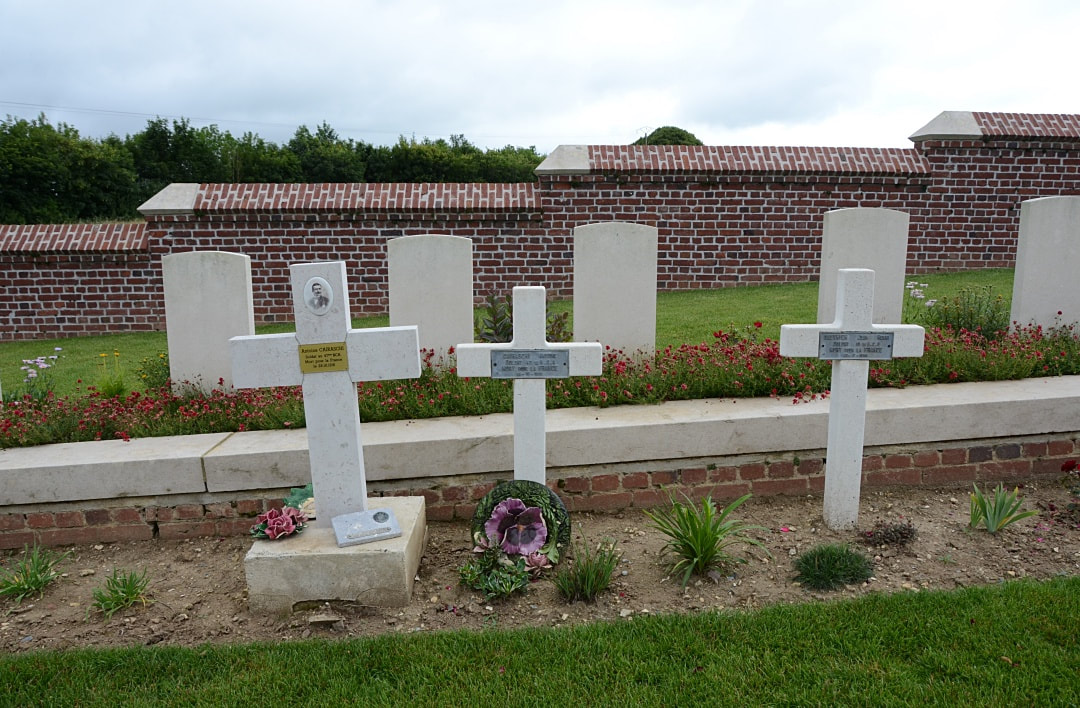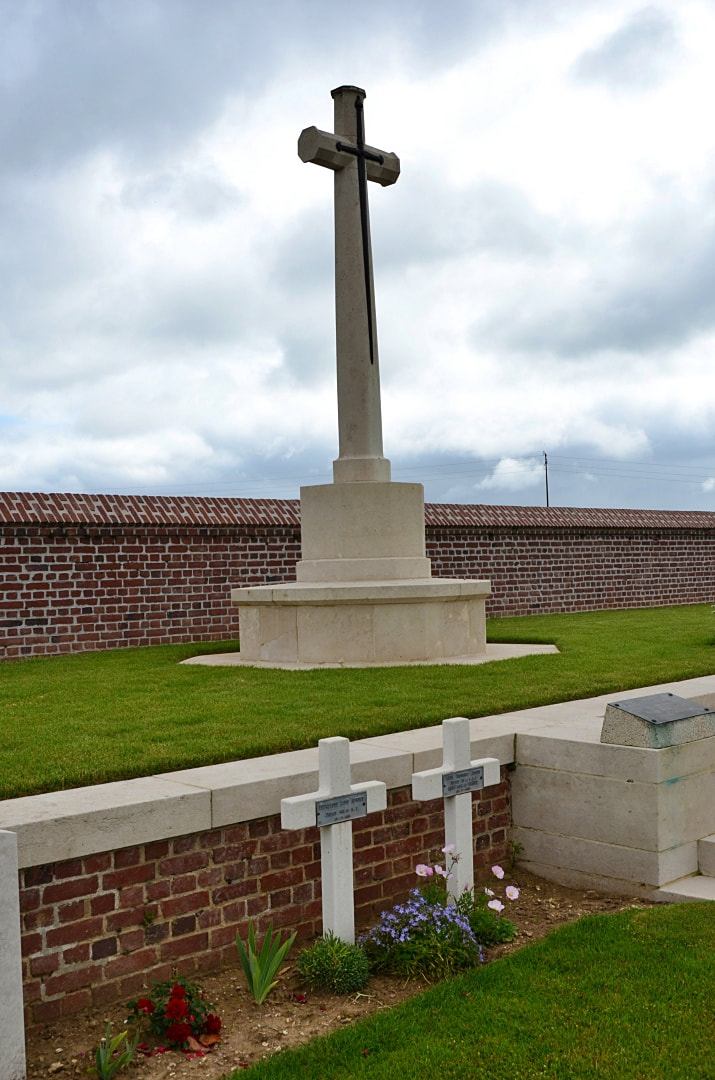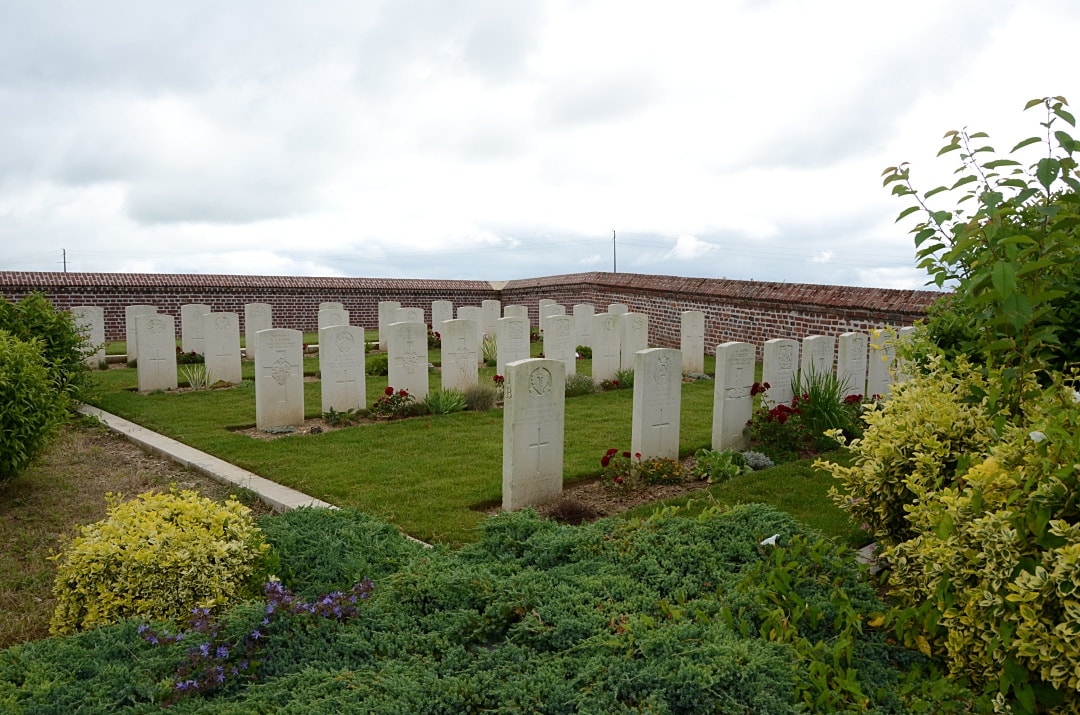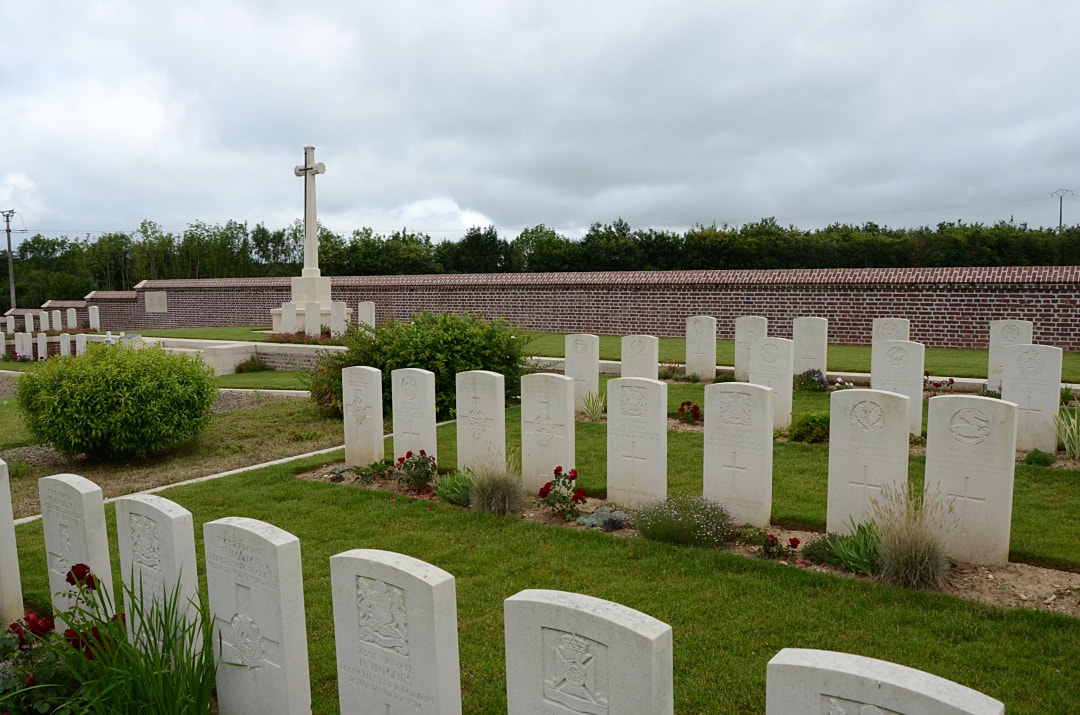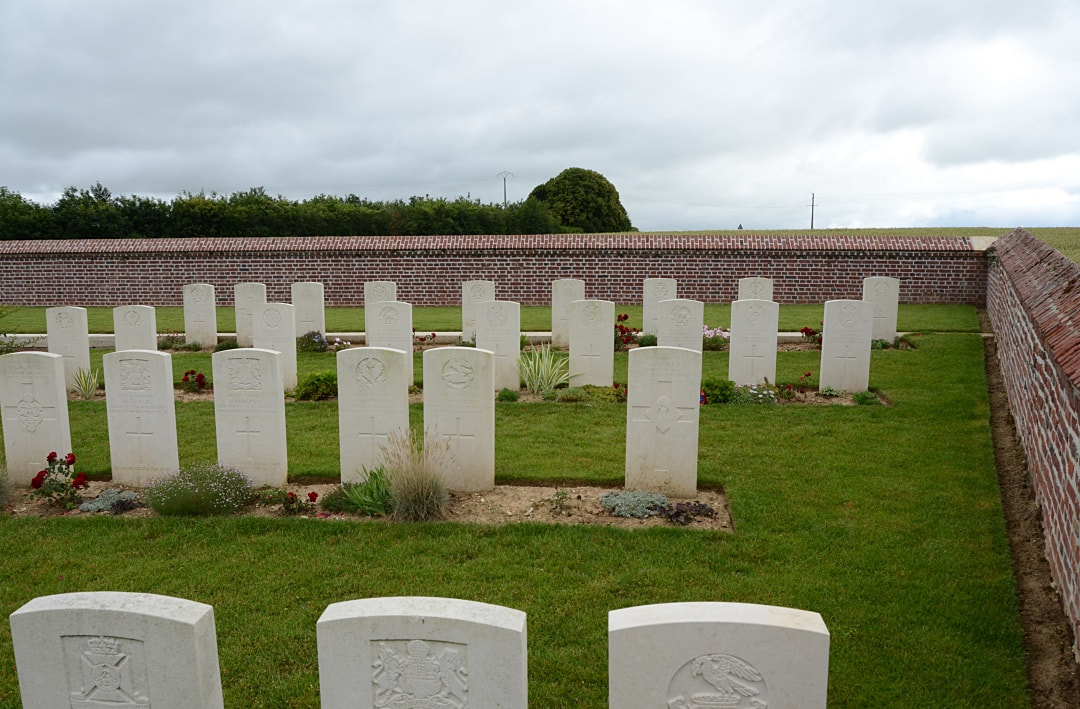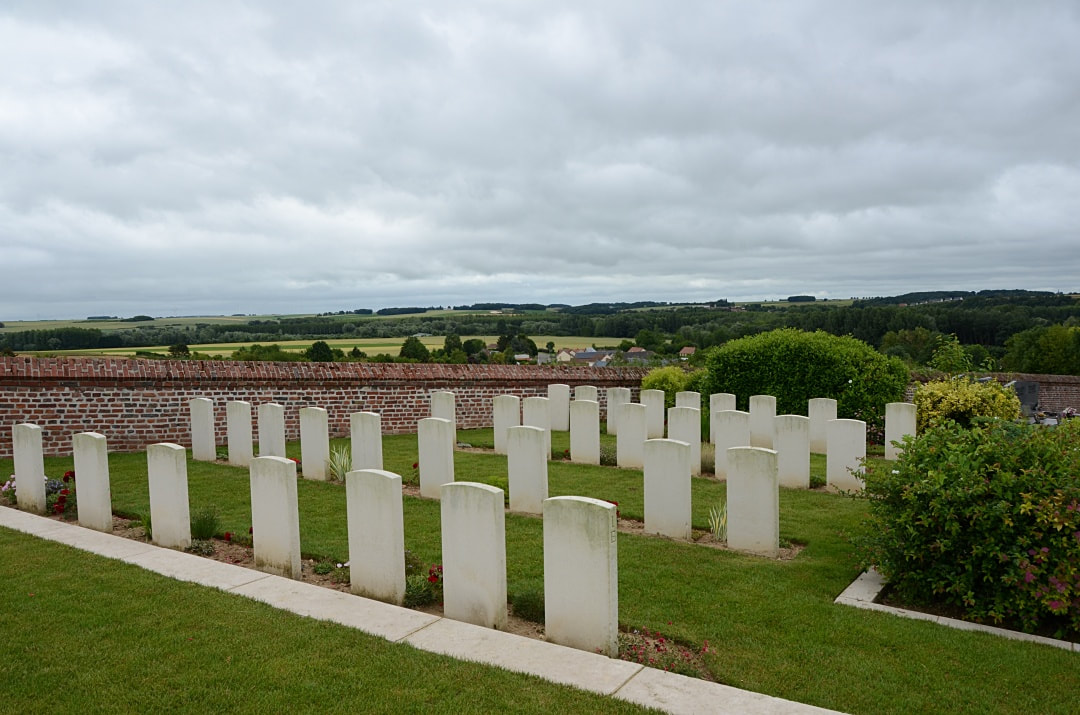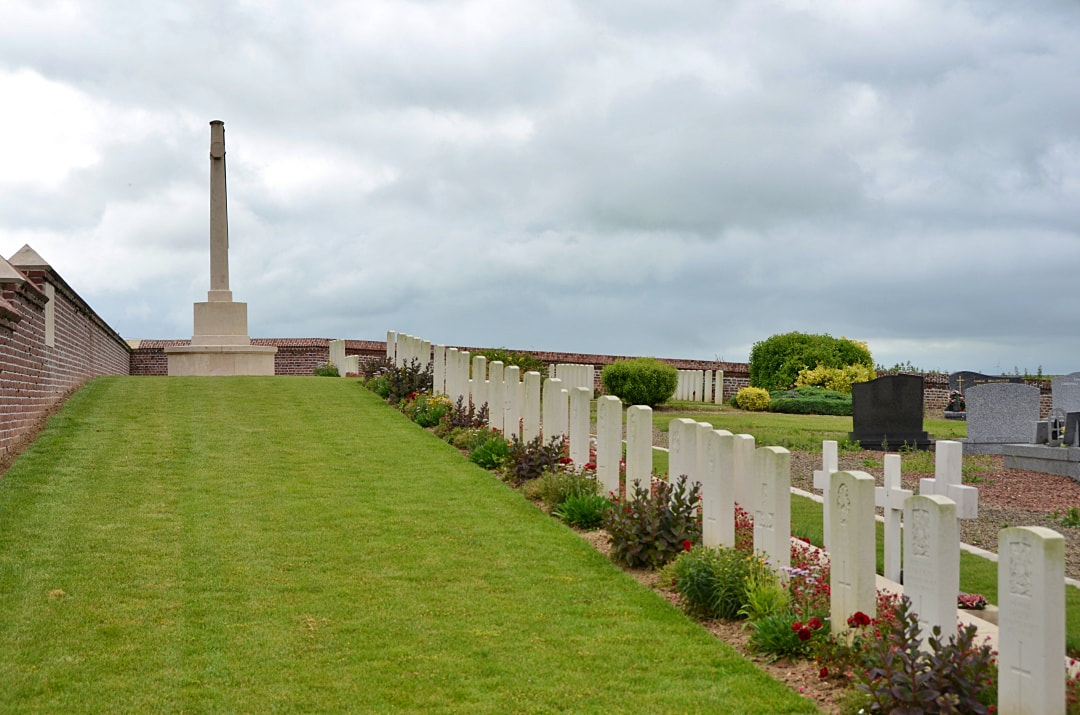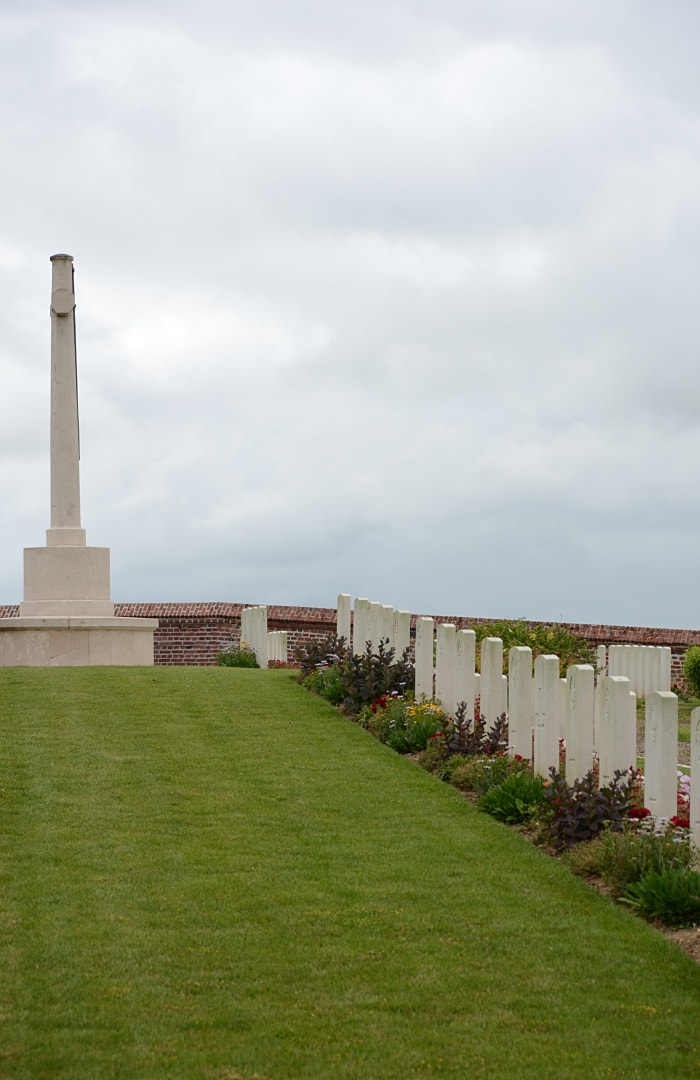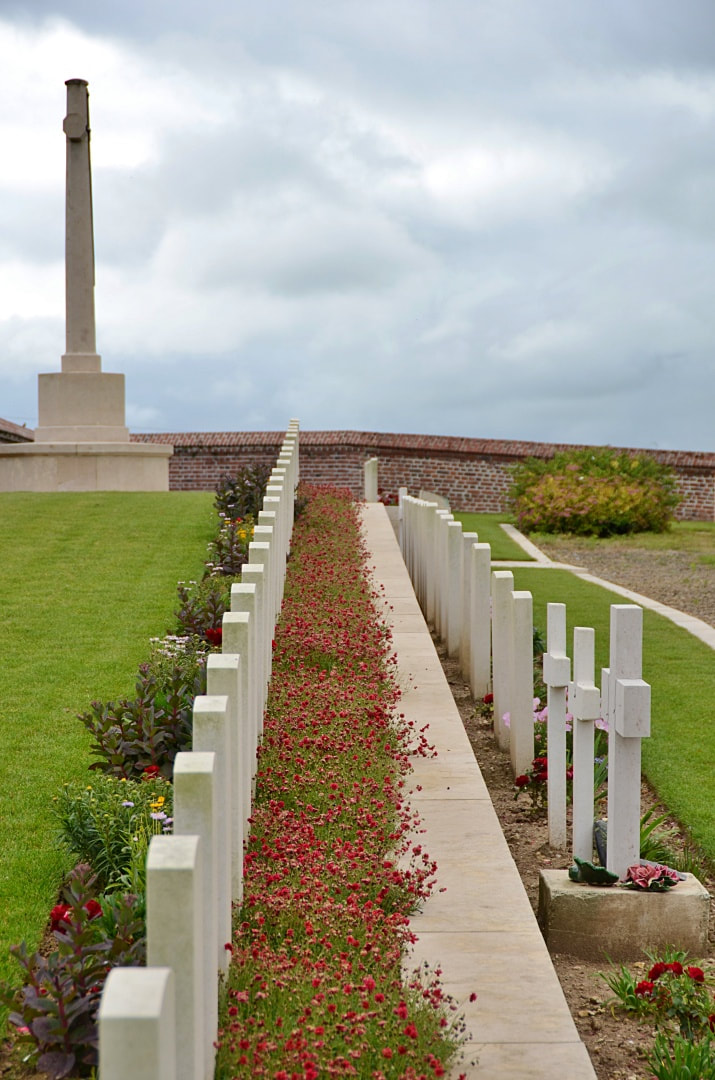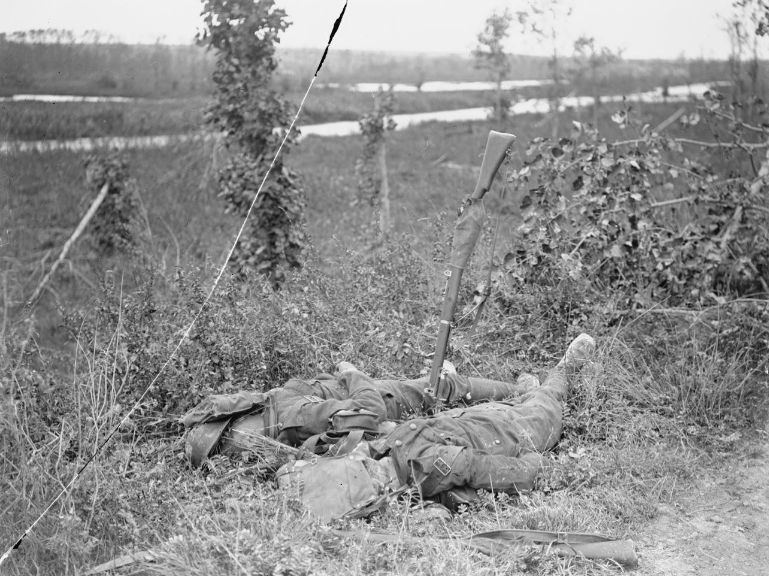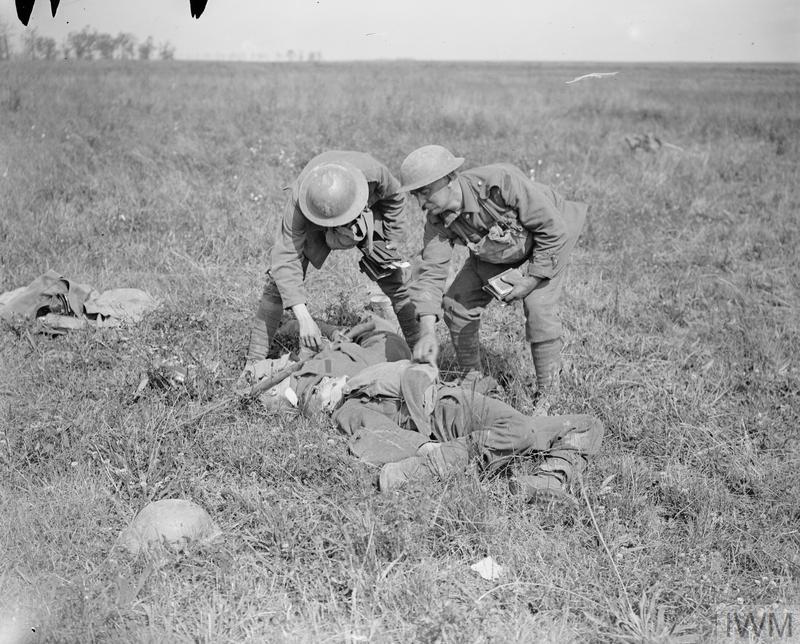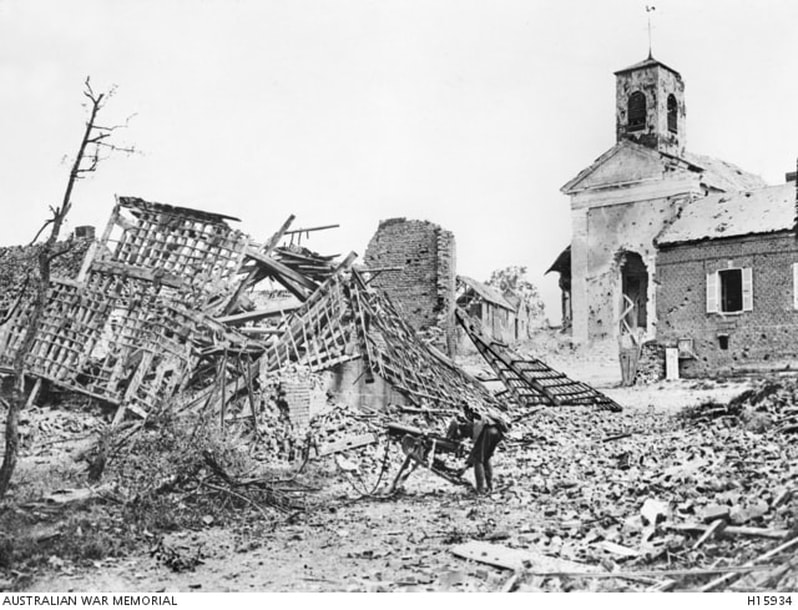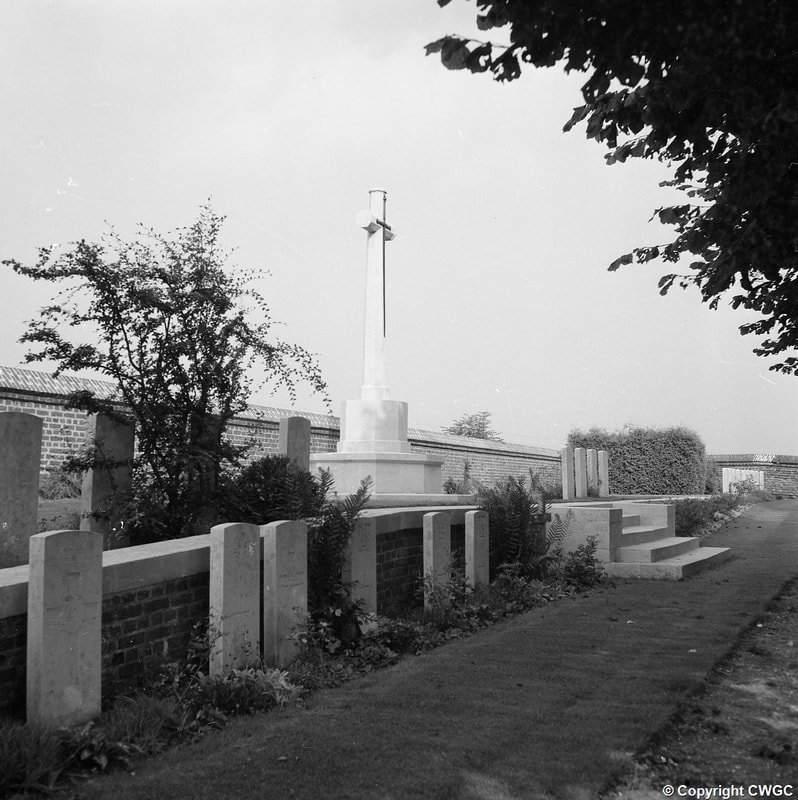CHIPILLY COMMUNAL CEMETERY AND EXTENSION
Somme
France
GPS Coordinates - Latitude: 49.91054, Longitude: 2.65009
Location Information
Chipilly is 10 kilometres south-east of Albert and 27 kilometres east of Amiens.
From Albert, take the D42 in the direction of Morlancourt and Moreuil. As you pass through Morlancourt, on your left there will be a signpost indicating Bray and Chipilly. Turn left here, cross over the D1 Bray road south to Chipilly. The Communal Cemetery lies on the left hand side of the road with the CWGC Plots situated to the far left and the Extension to the rear of the cemetery.
The register is available in the Mairie on Monday from 14.00 to 15.00 and Thursday from 18.00 to 19.00
Historical Information
The village of Chipilly was used by field ambulances in 1916. It was captured by the Germans in March 1918 and retaken in August, after a severe struggle, by the 58th (London) Division.
CHIPILLY COMMUNAL CEMETERY contains a Commonwealth plot, begun in August 1915 and used until March 1916. A further burial was added to Row A in April 1918.
The communal cemetery now contains 55 Commonwealth burials of the First World War, two of them unidentified. There are also four French war graves within the plot.
Total Burials: 59.
Identified Casualties: United Kingdom 53.
Unidentified Casualties: United Kingdom 2.
CHIPILLY COMMUNAL CEMETERY EXTENSION was made by Commonwealth troops between March 1916 and February 1917, then used again for three burials in the summer of 1918.
The extension contains 31 First World War burials.
Total Burials: 31.
Identified Casualties: United Kingdom 29, Australia 2. Total 31.
The extension was designed by George Hartley Goldsmith
Chipilly is 10 kilometres south-east of Albert and 27 kilometres east of Amiens.
From Albert, take the D42 in the direction of Morlancourt and Moreuil. As you pass through Morlancourt, on your left there will be a signpost indicating Bray and Chipilly. Turn left here, cross over the D1 Bray road south to Chipilly. The Communal Cemetery lies on the left hand side of the road with the CWGC Plots situated to the far left and the Extension to the rear of the cemetery.
The register is available in the Mairie on Monday from 14.00 to 15.00 and Thursday from 18.00 to 19.00
Historical Information
The village of Chipilly was used by field ambulances in 1916. It was captured by the Germans in March 1918 and retaken in August, after a severe struggle, by the 58th (London) Division.
CHIPILLY COMMUNAL CEMETERY contains a Commonwealth plot, begun in August 1915 and used until March 1916. A further burial was added to Row A in April 1918.
The communal cemetery now contains 55 Commonwealth burials of the First World War, two of them unidentified. There are also four French war graves within the plot.
Total Burials: 59.
Identified Casualties: United Kingdom 53.
Unidentified Casualties: United Kingdom 2.
CHIPILLY COMMUNAL CEMETERY EXTENSION was made by Commonwealth troops between March 1916 and February 1917, then used again for three burials in the summer of 1918.
The extension contains 31 First World War burials.
Total Burials: 31.
Identified Casualties: United Kingdom 29, Australia 2. Total 31.
The extension was designed by George Hartley Goldsmith

17th August 1918: View of the Somme Valley, taken from Chipilly Heights, showing Morcourt (far left), Cerisy (centre left), and Corbie (far right). Hamel is located in the background (far right). Much of the country from Hamel to the left of the image was taken by the Australian troops on 8 August 1918
Images in gallery below © Johan Pauwels
Communal Cemetery
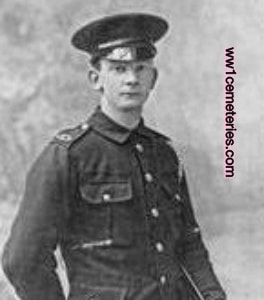
11735 Private
William Baillie
19th Bn. Manchester Regiment
23rd January 1916, aged 21.
Row C. 5.
Son of Walter and Sarah Ann Baillie, of 14, Bush St., Newton Heath, Manchester.
His headstone bears the inscription "His Name Liveth For Ever"
William Baillie
19th Bn. Manchester Regiment
23rd January 1916, aged 21.
Row C. 5.
Son of Walter and Sarah Ann Baillie, of 14, Bush St., Newton Heath, Manchester.
His headstone bears the inscription "His Name Liveth For Ever"
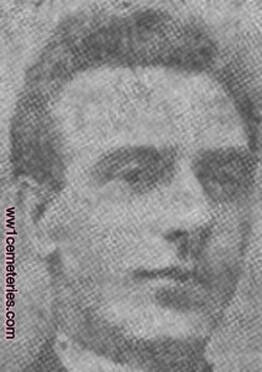
10196 Private
Harry Percival
18th Bn. Manchester Regiment
8th March 1916, aged 24.
Row A. 19.
Son of Mrs. C. Percival, of 11, Cumberland St., Lower Broughton, Manchester.
Harry Percival
18th Bn. Manchester Regiment
8th March 1916, aged 24.
Row A. 19.
Son of Mrs. C. Percival, of 11, Cumberland St., Lower Broughton, Manchester.
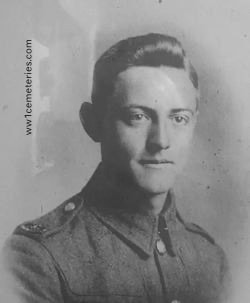
12525 Private
Albert Robinson
19th Bn. Manchester Regiment
23rd January 1916, aged 20.
Row C. 6.
Son of Mr. J. T. Robinson, of 91, Royle St., Northwich, Cheshire.
His headstone bears the inscription "I Have Fought A Good Fight I Have Kept The Faith"
Albert Robinson
19th Bn. Manchester Regiment
23rd January 1916, aged 20.
Row C. 6.
Son of Mr. J. T. Robinson, of 91, Royle St., Northwich, Cheshire.
His headstone bears the inscription "I Have Fought A Good Fight I Have Kept The Faith"
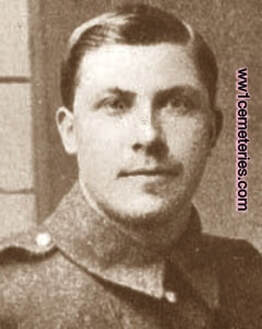
374 Private
Robert Williamson
1st/7th Bn. Gordon Highlanders
21st February 1916, aged 22.
Row A. 15.
Son of Magnus and Charlotte Williamson (nee Ramsay), of Nisseter, Ollaberry, Shetland.
Robert Williamson
1st/7th Bn. Gordon Highlanders
21st February 1916, aged 22.
Row A. 15.
Son of Magnus and Charlotte Williamson (nee Ramsay), of Nisseter, Ollaberry, Shetland.
Communal Cemetery Extension
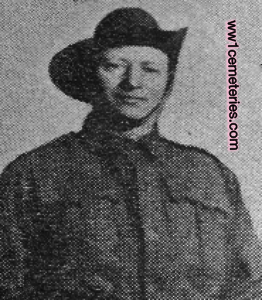
9438 Company Sergeant Major
Gilbert Campbell Brodie, D. C. M.
11th Field Coy. Australian Engineers
26th August 1918, aged 25.
Row A. 5. (Extension Plot)
Son of John and Charlotte Annie Brodie, of Riverview Terrace, Fairfield, Brisbane, Queensland.
His headstone bears the inscription "A Son, A Soldier, A Man"
Gilbert Campbell Brodie, D. C. M.
11th Field Coy. Australian Engineers
26th August 1918, aged 25.
Row A. 5. (Extension Plot)
Son of John and Charlotte Annie Brodie, of Riverview Terrace, Fairfield, Brisbane, Queensland.
His headstone bears the inscription "A Son, A Soldier, A Man"
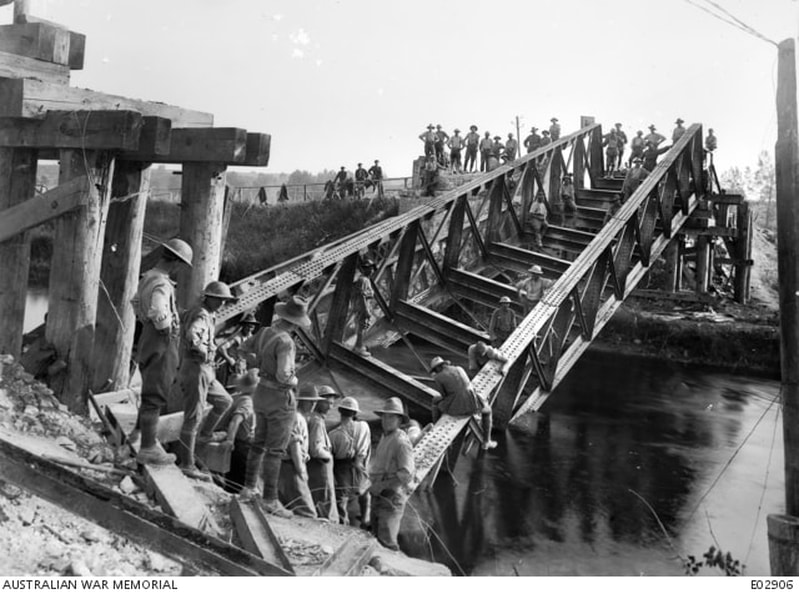
13th August 1918; Members of the 3rd Australian Pioneer Battalion on the Somme Canal, repairing a bridge which had been blown up by the Germans in their retreat. The battalion were issued orders to rebuild the steel girder bridge between Cerisy and Chipilly. Seated on the bridge wearing a white shirt, hat and leggings is 2067 Private (Pte) Sidney Frank Flenley. Pte Flenley referred to the photograph in his diary, writing "[w]e started erecting a big iron bridge that was blown up at Cerisey [sic], the Official photographer took our photos on it."

